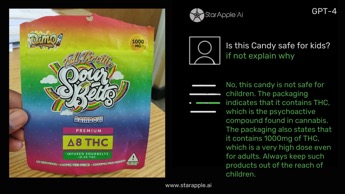

In recent years, the matter of public health safety concerning consumable goods has gained increasing prominence.
The issue reached a critical point recently when more than 60 Ocho Rios Primary students were hospitalised. The culprit? Candies infused with THC that were almost indistinguishable from regular candy. We couldn’t image the fear and uncertainty the children and their guardians experienced. This grave situation calls for a multidisciplinary approach, one where artificial intelligence (AI) plays a significant role, specifically multimodal AI models.
What are multimodal AI models?
A multimodal model is designed to understand, interpret, and generate insights based on multiple types of data, including but not limited to text and images. This capacity for varied data analysis makes it uniquely suited for complex tasks, such as differentiating harmless candies from harmful counterparts using just a photo.
Our research
To address the issue of foods harmful to children disguised as ordinary candy, Section 9, a specialised research group in StarApple AI focusing on social good and ethical AI, conducted an experiment using GPT-4, a multimodal model. The study involved testing 24 popular candy brands, aiming to discern which ones contained THC or could be harmful to children.
The model achieved an accuracy rate of 88 per cent, remarkable! given the complexity of the problem and diversity of candy packaging. While human testers achieved a slightly higher accuracy of 92 per cent on average. The model’s performance demonstrates the significant potential of AI-driven solutions in public health safety.




Expanding the scope
The utilisation of this multimodal model isn’t confined to identifying unsafe candies. It is inherently adaptable and can be further trained to analyse packaging designs for compliance with local regulations, generate safety recommendations, and more. As AI technologies continue to mature, their applicability in safeguarding public health can only be expected to grow.
This a global issue
It’s worth noting that incidents of THC poisoning due to misleading candies have been reported since at least 2019 in multiple countries, including the US, Canada, and the UK. The integration of AI models like the one used by Section 9 can serve as an invaluable tool in the toolbox of public health workers, citizens, and regulatory bodies, mitigating the risks associated with purchasing and consuming unsafe products.

AI and public welfare
We are at a critical juncture where technology and public health intersect. This study signifies a step in utilising AI for real-world applications that can have immediate and long-lasting impact. With continuous advancements in scientific techniques, AI’s role in enhancing public safety is not just promising—it is inevitable.
Adrian Dunkley is the CEO of StarApple AI and a member of the Forbes Technical Council. He has spent 15 years as an AI developer and researcher.







Comments